| 1 | Dominates the western USA |
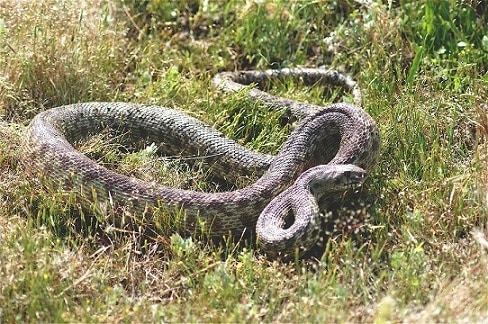
The gopher snake is one of the USA’s most common species, occupying nearly all of western North America (excluding deserts). In the north, they reach British Columbia and Alberta, while their southern reaches extend to Sinaloa and Baja California in Mexico.
Gopher snakes are flexible, and can inhabit open forests, meadows, crumbling cliff zones, farmyards, and small towns. However, they strongly gravitate towards more open areas. In forests, they stick to small clearings or fields just along the edges. It’s rare to find gopher snakes in a thick dark forest, or green boggy swamp.
Their favourite habitat of all is farmland, because of the gopher snake’s preference for rodents like mice. Hasty farmers occasionally bash their skulls in with spades, but like the corn snake, gopher snakes are one of a farmer’s silent allies. They hoover up the pests that nibble on crops, making pesticides less necessary. This love of crop field rodents is similar to the Russell’s viper of India, with one exception – they’re not the deadliest snake in their respective country, and they don’t kill scores of terrified farm workers.
| 2 | Bashes you with its nose |
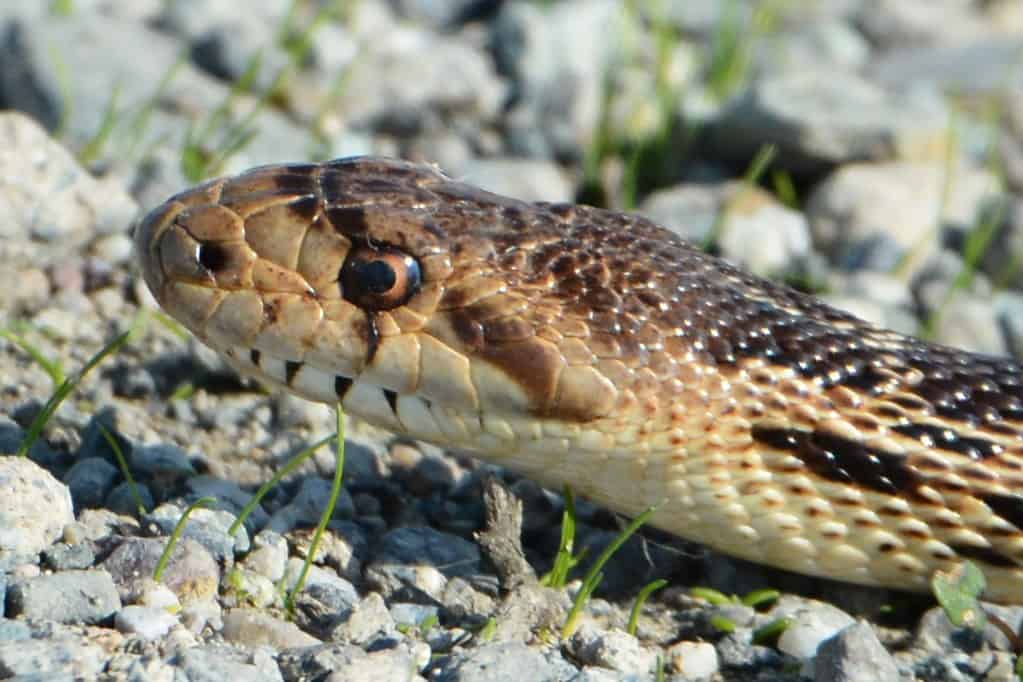
In California, gopher snakes are the single species reptile controllers are most commonly summoned to deal with. Yet despite those constant encounters, the gopher snake has never managed to kill a human being. It’s a non-venomous snake which kills its prey via constriction, foraging actively rather than waiting in ambush like a boa constrictor.
That said, there’s one secret weapon you should never underestimate. When confronted, the gopher snake normally stands its ground, coiling itself up and flattening its head. If the human refuses to leave, then the species will launch itself at the disturber, while clamming its mouth tightly shut. It thus delivers a blunt nosed bash (non-scientific term), thudding against the human harmlessly in order to deliver a warning.
Gopher snakes also have surprisingly vicious teeth. They only bite occasionally, but if they do, it’s advised to let them release themselves. The gopher snake has curved teeth which can tear your skin like A4 paper if you wrench your arm back too quickly.
| 3 | Constantly mistaken for rattlesnakes |
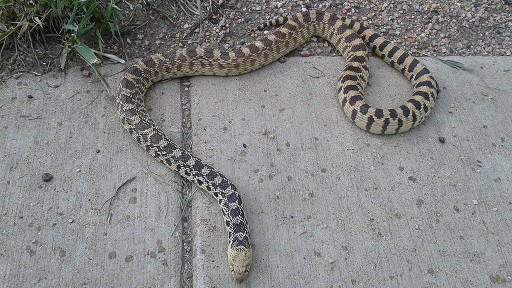
The gopher snake uses the smart strategy of mimicking the much deadlier rattlesnake, in order to effortlessly scare off predators. One trick is to shake its tail in a leaf bed, to mimic the rattlesnake’s rattle without actually having one.
Unfortunately, this has now backfired. Ever since the 19th century, farmers and villagers across America have whacked this snake to death after mistaking it for a real horror serpent. To this day, reptile controllers receive frightened phone calls from old ladies insisting there’s a rattlesnake on their porch.
The gopher snake looks somewhat similar, with a beige to light brown colour, and dozens of irregular blotchy patterns. They’re much more easily confused than the smooth green snake (which is fully green), or the coachwhip, with its extremely fine grey patterns.
The key is that gopher snakes have a thinner tail, a consistently coloured tail (unlike the rattlesnake, which changes colour where the rattle begins), and a sleeker head. The simplest sign is their round black pupils, with a rattlesnake having vertical (elliptical) pupils.
| 4 | The king of weird noises |
The Russell’s viper of India supposedly has the loudest hiss of any snake, but the gopher snake has its own claim to fame – it’s a rare snake to have vocal chords. Its hiss is already loud and piercing, but this bonus organ gives it an unusually low and rumbling sound.
They also have the power to bark like some sort of cursed dog. Marissa Maki discovered this in March 2021, when she was summoned to deal with a gopher snake slithering around a kitchen in Mesa, Arizona. As usual, the resident had mistaken it for a rattlesnake, and the video shows her gripping the 2 foot snake with one hand, while its bared pink mouth lunges forward in a vicious attempt to bite her.
Amid the strange barking, Maki just managed to thrust it inside the bucket. According to Maki, who regularly had to deal with gopher snakes in her job at Rattlesnake Solutions, the species usually hisses and rasps loudly, but this barking was weird even among the usual weirdness.
| 5 | Hibernates with other species |
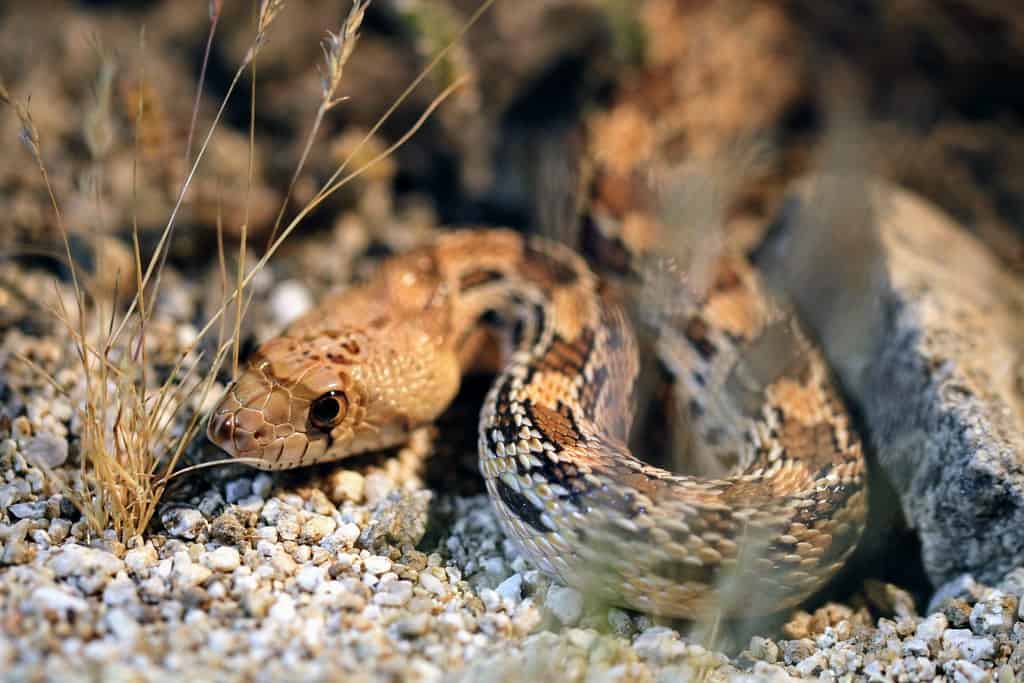
There are no truly social snakes, but the gopher snake is more social than most. Every year, when gopher snakes brumate (the reptile version of hibernation), they slither into dark underground chambers known as hibernacula. There, they huddle together in a giant reptilian mass often featuring hundreds of other snakes, never biting or quarrelling with each other, in order to preserve precious pockets of warmth.
Gopher snakes have been seen brumating with western rattlesnakes, western yellow-bellied racers, and common garter snakes. Their favourite locations are grassy slopes with a moderate incline, but they also hibernate under railway lines or bundles of rocks.
Gopher snakes are partial to underground lairs outside of hibernation, as one study found that they spend 90% of their lives underground. But in the sunniest weather, they sometimes swing too far the other way, and bask in the sun so much they get skin cancer.
| 6 | Egg farmers hate them |
In one study, Canadian scientists cut open roadkill gopher snakes and found that their diet consisted of 84% mammals. Voles, shrews, and Great Basin pocketmice ranked highly, but the single most common food item was the Eastern deermouse (Peromyscus maniculatus), occurring in 32% of dead gopher snakes.
This tiny mouse occupies nearly all of North America, and has the signature characteristics of large beady eyes, and gigantic ears for hearing. It’s fast and scurrying, but only 8-10cm long, a perfect meal for the gopher snake. The corn snake also relies heavily on mice, but this time a different species: the white-footed mouse. Each snake species has its own niche, to avoid punishing competition with each other.
Gopher snakes might be friendly to farmers overall, but chicken farmers are less keen. On google, there’s endless queries about whether gopher snakes will sneak into farmhouses and devour their eggs. Some amateur farmers have even found their chickens lying dead, with their heads covered in a snaky slime, as though the gopher snake had tried to swallow them, failed, and coughed them back up again.
| 7 | Unusually vulnerable to birds |
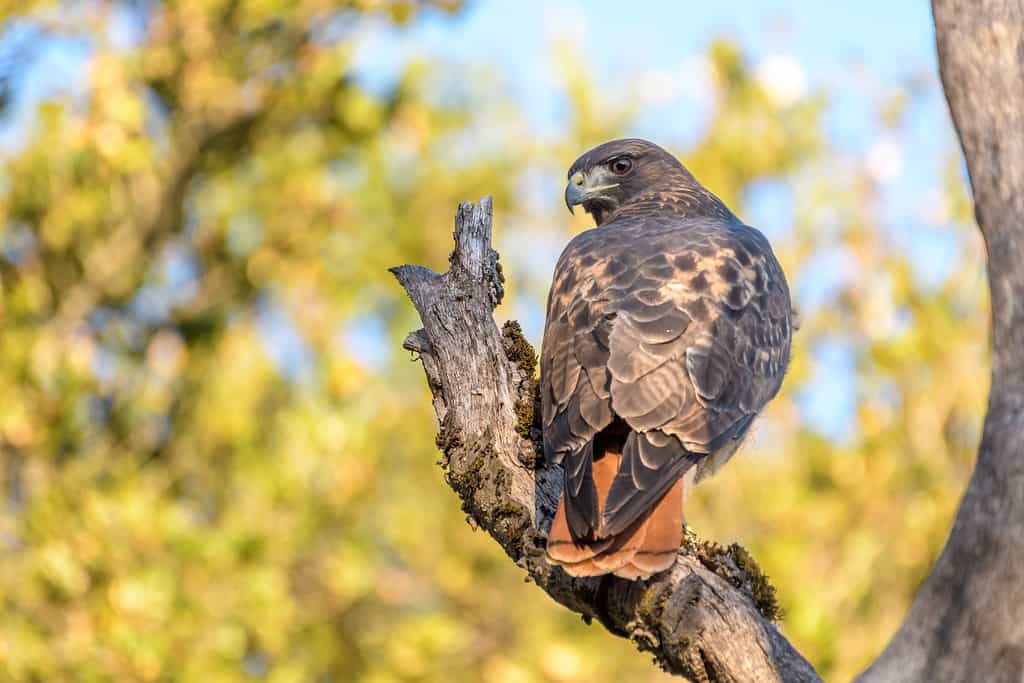
Gopher snakes aren’t immune from the horrors of predation themselves either. Badgers, coyotes, and skunks are confirmed to hunt them, but their real nemesis is the snake-munching red tailed hawk.
This brutal bird is spread across the entire USA, and is commonly dubbed the chickenhawk after its occasional diet of chickens (not because it’s a wimp). A large portion of its diet is reptiles, with 80 species recorded to date, and the gopher snake is ranked 1st in frequency. One study along the Columbia river in Washington found that gopher snakes made up 18% of their diet. These birds instinctively know what to do; they simply swoop down and pick up the snake with their claws, in the open fields which gopher snakes favour.
The gopher snake’s main weakness is its lack of venom. One survey in California’s San Joaquin found that western rattlesnakes outnumbered the local gopher snakes fivefold. Yet the local red-tailed hawks hunted gopher snakes 225 times, and the local rattlesnakes only 83 times. The gopher snake is lacking a key element of defence, and often pays the price in the wild.
| 8 | Attracted to warm roads |
Gopher snakes have a common habit of basking on roads, where the dark tarmac absorbs the sun and warms their reptilian bodies. They’re far more common on roads than coachwhips, but the downside is a tendency to become roadkill.
Gopher snakes aren’t endangered according to IUCN, which gives them a “least concern” rating, but statistics show that within 450 metres of busy roads, their populations fall by 50%. One particularly notorious road lies just south of Picticton, Canada, where roadkill made up 85% of gopher snake observations over 12 years. In a Canadian study from 2008, 3 out of 39 radio-tagged gopher snakes were killed by cars over the next three years.
It’s estimated that a gopher snake takes two minutes to cross a two-lane road; they’re not the fastest snake species. They also like to linger on roads past sunset, making it impossible for drivers to see them. Unlike a flock of birds, they don’t have the sense to get out the way. A gopher snake’s natural reaction when confronted is to coil up and stand its ground.
| 9 | The two-headed version |
Everyone is familiar with the sight of conjoined twins in humans, when twins fail to separate fully in the womb and are often detached in operations featured on the lunchtime news. Bicephaly is the specific condition where twins barely separate at all and have two functioning heads, but share a body and several organs. Britanny and Abigail Hensen are the famous example in humans, and the condition often happens with gopher snakes as well.
In 2008, Nicholas Cage donated a two-headed snake he had acquired from a mysterious source. He had previously brought out the snake at a party to impress his Hollywood friends, who had begged him to let it star in a film. Instead, Harvey the snake (named after Harvey Two-Face, Batman villain) came to live at Audubon Zoo in New Jersey. He lived to a ripe old age of 13, and the two snakes had independent personalities, with one said to be more aggressive than the other. The two had separate brains, but shared all their other organs, including the heart. As the zoo posted on Instagram in September 2021, Harvey succumbed to “health issues related to old age“.
| 10 | Another two-headed version |
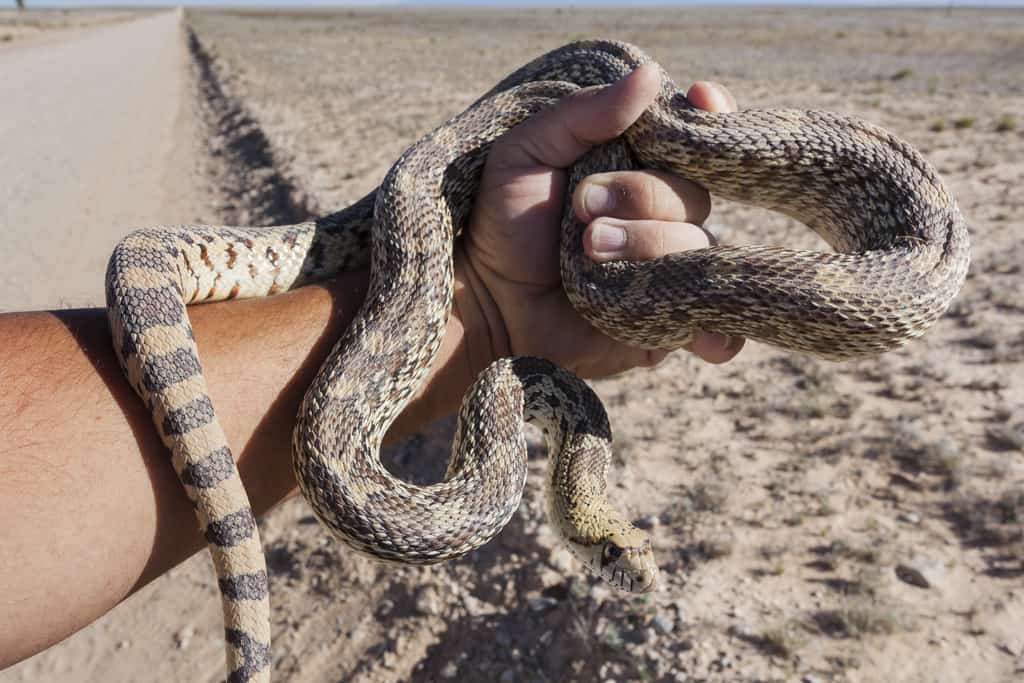
Harvey also had an ancestor, at least in spirit: a two-headed gopher snake born in 1969, who ended up at the California Academy of Science. This snake again had two heads with separate personalities, sharing a body and all major organs except the brain. This time, the heads were at more of a diagonal angle, so that it was impossible for the siblings to look at each other.
This snake was the survivor of all survivors, as in 1977, a plague of dysentery amoeba broke out in the zoo. Almost every other snake was killed, including the pythons and anacondas, yet the resident two-header somehow weathered the storm untouched. The right head was the more dominant of the two, eating adult mice while the left head only ate baby mice.
In 1984, the duo became the oldest two-headed snake in the world at 15 years old. The double gopher snake finally died at age 22, which is long for a normal gopher snake, let alone a two-headed super snake. The carcass is now on proud display in the Academy in a glass jar.
| 11 | Many hunting strategies |
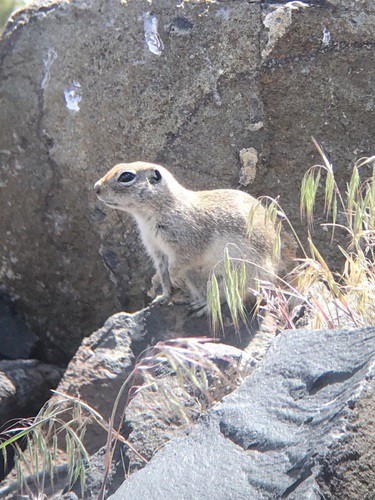
There’s a good reason why the gopher snake is so common. They lack venom, but possess virtually every other hunting skill in existence. The gopher snake is able to…
-Swallow bird eggs and crack them open by slamming its own body against a hard rock.
-Constrict 3 nestling rodents at once, in 3 separate body coils.
-Invade tight mammal burrows and pin prey to tunnel walls.
With smaller eggs like quail eggs, gopher snakes can swallow them whole and do nothing. They’re also flexible. In southwestern Idaho, the local gopher snakes primarily feed on Townsend’s ground squirrels (pictured above). In this area, winter 1976 and spring 1977 saw a severe drought, which prevented the local squirrels from breeding. In response, the food consumption of Great basin rattlesnakes, which also favoured the squirrels, plummeted by nearly 80%, as they were missing their favourite food source. Yet the gopher snakes barely suffered at all, despite the squirrel being their favourite prey.
Gophers snakes are clearly far more flexible than rigid rattlesnakes, as they have birds and bird eggs as a back up. In different regions, they have different favourites – the California ground squirrel is their default further west, while the eastern deermouse is favourite in parts of Canada.
